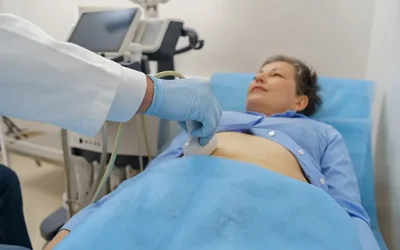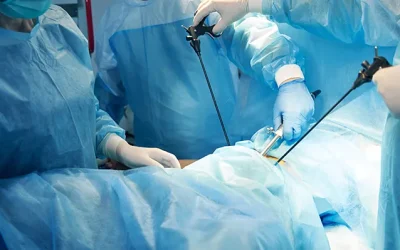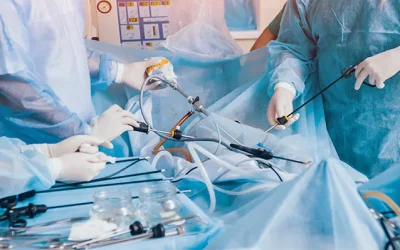I am hereby posting an article written by my Medical School friend and classmate Dr. Bharath who now practices in the USA. Read on ……………
“Bharat, how many patients do you have?” Maria is quite a well-seasoned physician and wouldn’t usually ask me to take care of any of her patients.
“Can you please take care of this patient whom I am looking after now?” asked Maria. Now I was surprised. “This is a 62-year-old male patient who is in a group home. He was found in his bed unresponsive. Prior to returning to his room, he had choked and fainted in the dining hall. The EMS intubated him and found a piece of sausage in his trachea. En route, he suffered a full run of V-Fib and was defibrillated twice. The UNOS is called according to hospital policy and he is potentially an organ donor”, She continued, “I can take any one of your patients in return”.
I hesitated, because, of late, some of my patients were not doing so well, either. I had in fact three, who were assigned for comfort care only, which meant, withdrawing all treatment except pain killers, so that they would die peacefully without pain. So, for the last three days, I had been speaking to the anxious family members of these patients with all the courage I had, that their loved one is dying.
The first one was an 82-year-old lady with mild dementia, who had recently suffered a stroke and was discharged, only to come back 2 days ago with a massive STEMI. Being sensible as she was, she had, in her days of clear mental state, executed an advanced directive ‘NOT TO RESUSCITATE.’ Her three beautiful daughters were trying to hold back their tears in front of a stranger, a doctor who was telling them that their mother might not be alive in a matter of hours or days. When I explained to them that their intelligent mother had wisely executed that advanced directive, since she didn’t want to live that way, they tearfully agreed and she was kept on comfort measures only.
The second patient was a 78-year-old gentleman with refractory heart failure with ever-increasing peripheral edema and anasarca. His renal markers were progressively increasing and he was becoming more and more drowsy. With a recent 2 D Echo showing only a 15% ejection fraction, he had no hopes of recovery. I had to talk to his two brothers slightly older than him, maybe 2 and 4 years. They were living together in a townhome supporting each other as one of them was blind. When I told them that their younger brother was dying, the eldest one with the clear vision, was in tears and said that he couldn’t bear to see his ‘baby brother’ dying.
My third patient was a 90-year-old male with chronic heart failure and a cryptic coagulation disorder, probably due to an undetected malignancy with several DVTs, renal vein thrombosis, and bowel ischemia (possibly secondary to thrombosis) and was admitted with progressive respiratory failure with pulmonary embolism, in spite of therapeutic INR at 2.3 on Coumadin. It was equally emotionally draining to talk to his very mature and rock-like daughter, who didn’t need anything from me after I gave her the information that her father was not going to survive.
I agreed to take care of Maria’s patient. Maria told me that the patient had already had an EEG yesterday, which showed no cerebral activity. She also told me that the EEG lab was currently doing another round today. The moment I walked into his critical care cubicle, I noticed that he was not breathing even one breath above the ventilator. He was not on any kind of sedation and there was no doll’s eye movement either. His pupils were fixed and nonreactive.
“Hello. Mr. GS…” I called out his name, “Can you hear me?” to which his response was a motionless silence. Somehow, I felt nobody was in there. I called Brook, the nurse taking care of Mr. GS, and told her there was some crusting in the eyes, and that his eyes need to be kept moist and closed since his corneas may be harvested. She came back immediately with a small tube of artificial tears.
“Knock knock”.. a lady in her late thirties, who was slightly more made up than the usual hospital visitors appeared at the door. She introduced herself as one of the Nurse coordinators for the UNOS. She asked me if I was familiar with the requirements of the UNOS in facilitating organ donation. I told her that I was not, except for the one occasion when it was introduced at the time of orientation to the hospital. She handed me a small booklet that briefly covered the standard hospital policy observed throughout the state and protocol to be observed to declare brain death. I went through the protocol and was satisfied that I had not forgotten.
Another coordinator from UNOS was sitting at the nurses’ station. She looked less friendly than the first lady and almost, ordered me to get a cerebral perfusion scan immediately so that they can hasten the process of organ donation. I tried to hide my irritation with this hands down approach and told her that I had just assumed the care of the patient and as it was just over 36 hours after stopping any kind of sedation, it would be too premature to do either a brain death protocol or perfusion scan. Probably she sensed my irritation and hesitated a bit. I told her that these protocols were there for a reason and since surgical harvesting of organs effectively removes all functioning organs from his body, we have to make sure that these protocols are followed. Just then my patient’s nurse came back with his latest ABG and blood test results. She told me that the pCO2 was high and there was hypernatremia with serum sodium at 162 mEq/ L. I asked her to switch the patient’s IV fluid from 0.45 NaCl to 5% Dextrose at 150 mL/ hr.
“Can you give a bolus of a liter of 5% Dextrose, doctor?” Asked the second coordinator from UNOS. I told her we can do that if she just wants the numbers to improve cosmetically. “Oh, one more thing doctor, I was told that you want to speak to the family members of Mr. GS. Can you defer it until the declaration of brain death?” she asked. I told her since the patient was living in a group home for non-functional, or quasi-functional individuals who were totally dependent for activities of daily living, it was definitely appropriate to talk to the next of kin before the declaration of brain death. I also said to her that according to my understanding, the patient didn’t have a driving license, and was not capable of taking a conscious and educated decision regarding organ donation.
The day went fast with rounds and seeing new admissions and a meeting of the utilization review committee. I checked all four of my dying and dead patients. The heart of my patient in critical care who was about to donate his organs was still ticking. His serum sodium had come to 159 mEq/ L. There was a change in nursing staff, and Danny, the 50-year-old Philipino Nurse was there taking care of him. I was satisfied since he is a very good nurse. I transferred the calls to my Spectralink phone to my cell phone to take any calls if there was anything at night. I went to the Telemetry floor and met all three patient’s families by the bedside and checked that they were pain-free.
In the evening, brother and sister-in-law of Mr. GS had flown in from Texas. They were very calm, courteous, and understanding. I explained to them how Mr. GS ended up in this situation, and explained to them, that in the light of observations so far, it was almost certain that he was brain dead. They agreed to sign the papers necessary for organ donation.
Around 11 PM, when I was getting ready to go to bed, Caroline the night Hospitalist called, to tell me that Mr. GS in critical care had a low urinary output, and his hemoglobin had dropped from 15 g/ dL to 10 g/dL. Although he was on high flow IV fluids, the drop in hemoglobin was unusual. I asked her whether she had checked for any bleeding. She told me that she introduced a nasogastric tube and it yielded about 400 mL of coffee-ground colored fluid. Also, the patient’s serum sodium had slightly gone up to 161 mEq/ L again. I asked whether she can start the patient on vasopressin and she said she had already done so.
The next morning, Mrs. MS, my patient with massive STEMI died peacefully, 48 hours after starting on comfort measures. Family members were very sad, but her daughters thanked me profusely for whatever we had done, and nurses on the telemetry floor were fantastic, they said. I ordered for nuclear medicine cerebral perfusion scan for Mr. GS in critical care. Vasopressin seemed to have helped the diabetes insipidus of brain death and improved the serum sodium to 155 mEq/ L.
Messages on our WhatsApp group were flying fast and there were daily updates since our reunion in Orlando was fast approaching, reminders to “late latifs” like me, customary jokes, and forwarded messages in tow. I was able to reassure friends that we would be there on Friday, May 26.
Mr. GS had his cerebral perfusion scan which was suggestive of brain death in an appropriate clinical setting. At about 72 hours after stopping all sedation, I performed the second brain death protocol and we were convinced that there was no response. In the absence of any brain stem reflexes, 2 EEGs showing no cerebral wave activity, cerebral perfusion scan suggesting brain death, and 6 minutes of stopping mechanical ventilation failing to trigger any respiratory activity, with some elevation in pCO2 on ABG, I declared Mr. GS brain dead. I had a feeling I saw tears in the eyes of Brook, the nurse who was taking care of Mr. GS since morning. I conveyed the news to the UNOS representatives. They looked a little relieved and hurried back to their temporary office with open computers, established in the far corner of doctors’ dictation area in critical care. I was told that they probably were not going to harvest his heart because of the cardiac arrest he suffered en route hospital.
By the time I was about to leave, Danny was there again in the night. He asked me whether we need to continue doing serum electrolytes every four hours since his serum sodium was 152 mEq/ L now. I told him we will continue.
When I returned back the next morning, I had my sign-out from the night before. Mr. AR, the gentleman with refractory heart failure and LV ejection fraction of 15% had died peacefully in the night, and Mr. GS was taken in the morning to the OR for organ harvesting. Surgeons from all over the country had flown to our little midwest town and were currently operating him.
Before I could take the lunch break, around 11:45 AM, Cynthia, the nurse looking after Mr. FS, the gentleman with cryptic multiple embolisms, called me to tell me that his monitor was showing a flat line. I rushed to his room and saw that his daughter was sitting by his bedside holding his hand. I told her “I am sorry, your father passed away”. “I know,” she said softly, and turned to me and Cynthia, “I thank you both and all the nurses who made this really painless and peaceful for my dad “. Suddenly I felt empty, just like the family members of my patients who lost their loved ones. I have seen the deaths of many of my patients, held hands, given hugs, and consoled families. I have seen the deaths of my family members as a grown-up man. However, four patients dying on my watch within 4 days was quite overwhelming. I couldn’t eat but had to, since I needed the energy to continue taking care of my patients who were still alive.
Driving back home that evening, I was sad. I tried to console myself that in the unfortunate event of having to declare another patient brain-dead, I am better informed now, and have the experience of going through the protocols. I reached home, finished my late supper, and went to bed thinking about the next 2 days’ work and planned journey to Orlando, and the excitement of meeting old friends. I remembered that all of us from the Class of 84 have turned fifty, now! I think it is a good thing to start at 50 something afresh.
Postscript: After coming back from Orlando, I was told that both kidneys, liver, and corneas of Mr. GS were harvested and at least four patients were given a lease of life with his organs, and tissues were collected for studies. Our critical care nurses received a ‘Thank you card from the UNOS.
Legend:
UNOS – United Network for Organ Sharing; EEG – Electro-encephalogram, 2 D Echo – Echocardiogram; STEMI – ST-elevation myocardial infarction; ABG – arterial blood gas; pCO2 – partial pressure of carbon dioxide.
Dr. Bharat N Sastry MD
Hospitalist Physician.
Indiana, USA.
bharatsastry@gmail.com




0 Comments